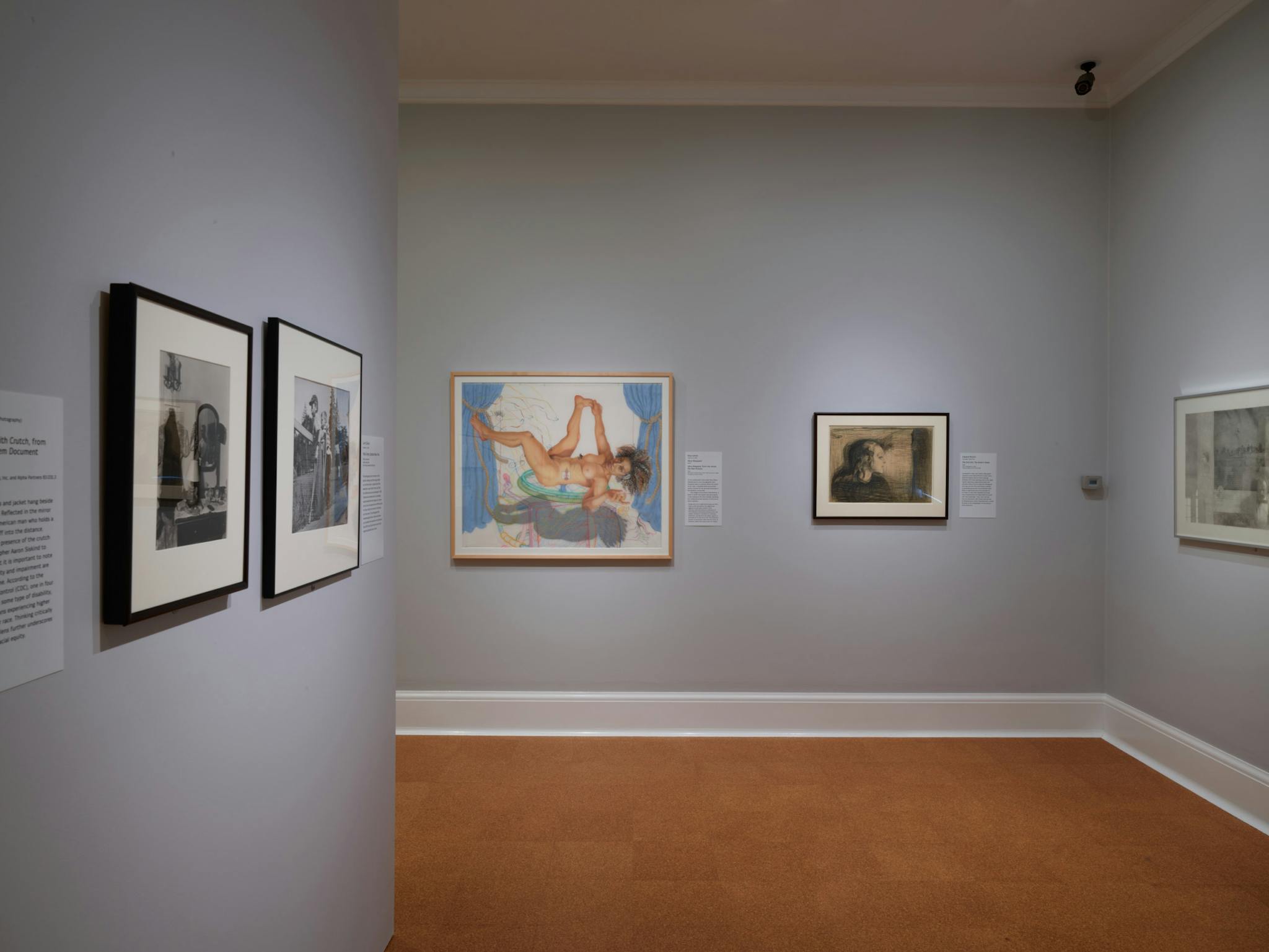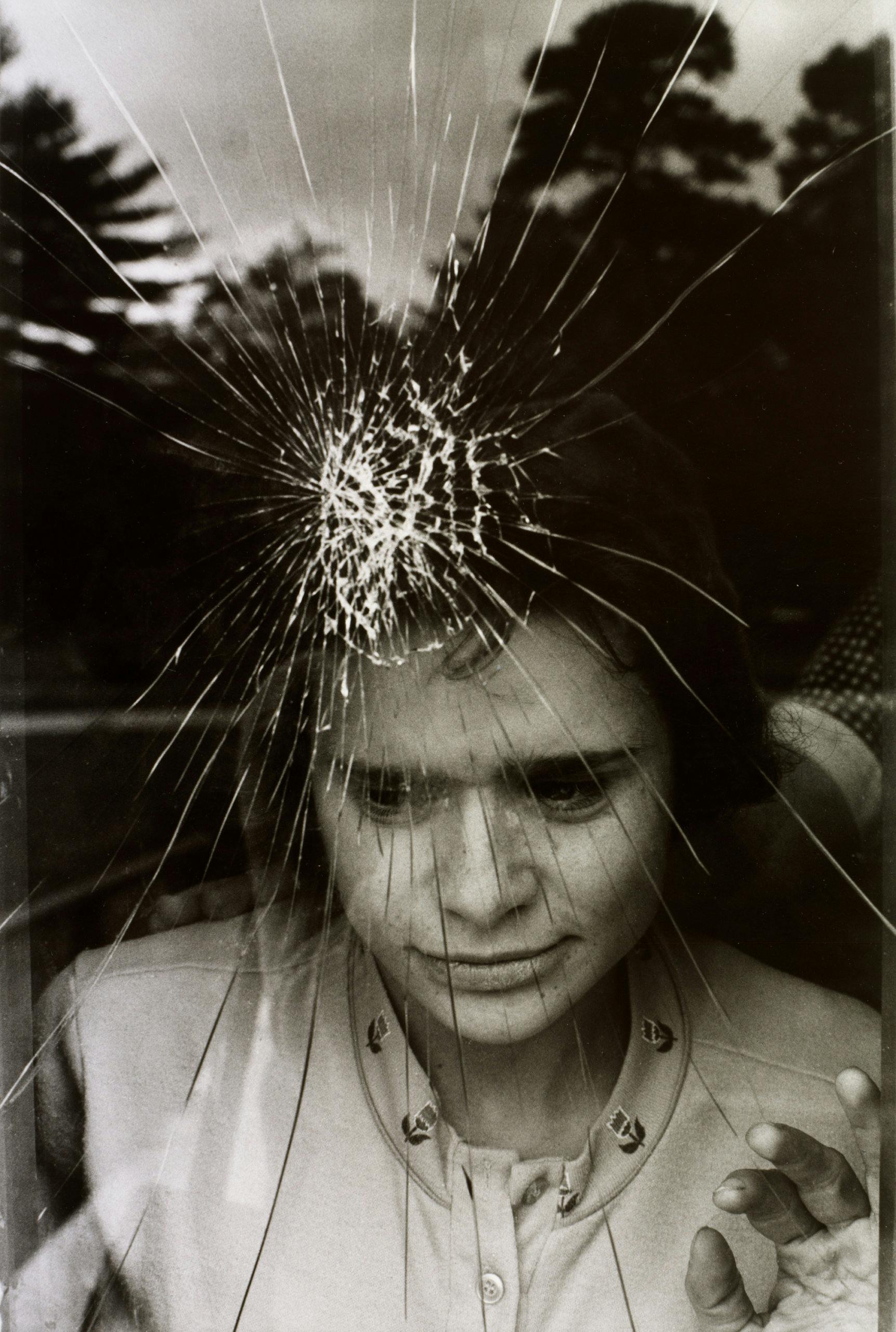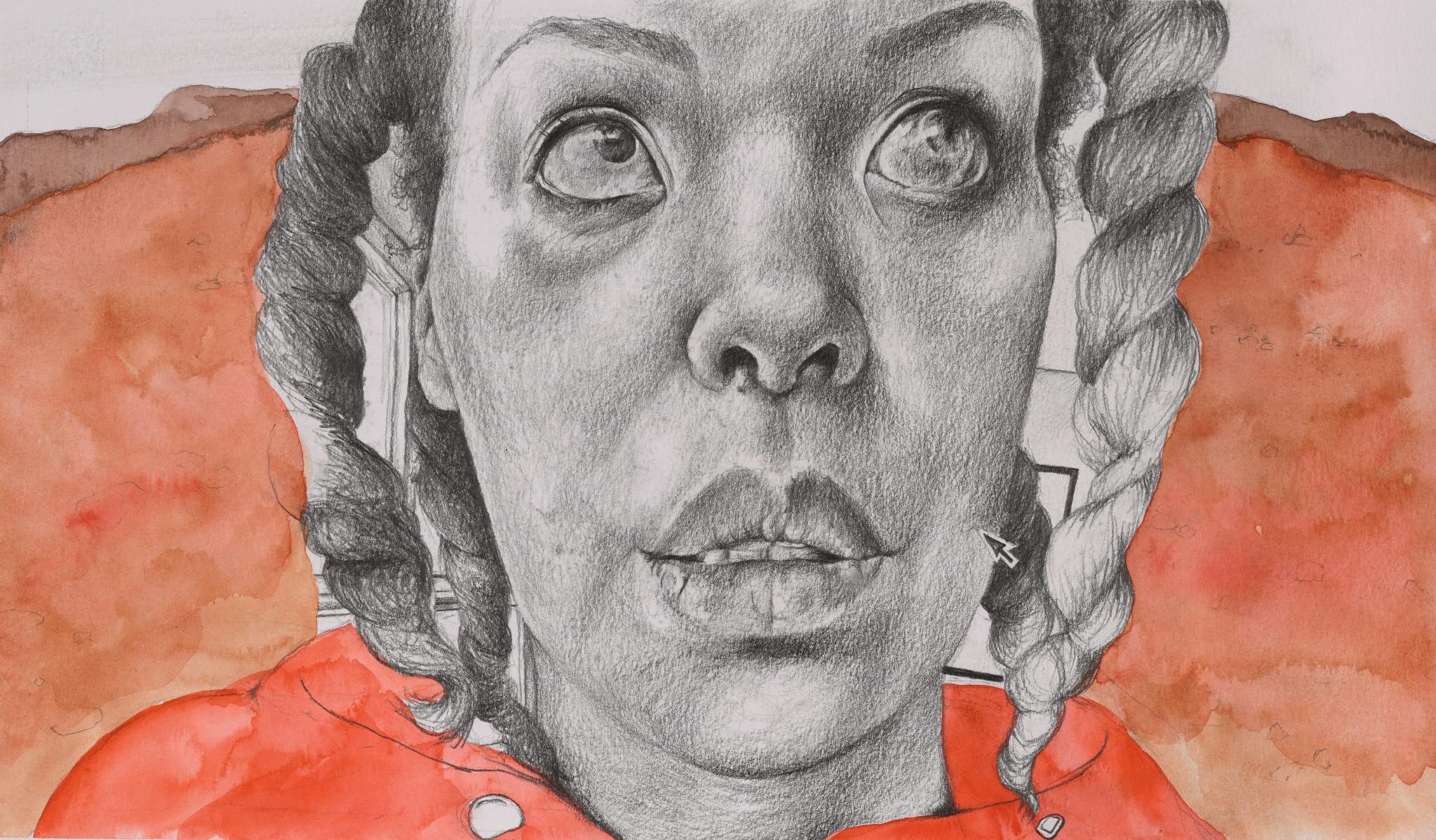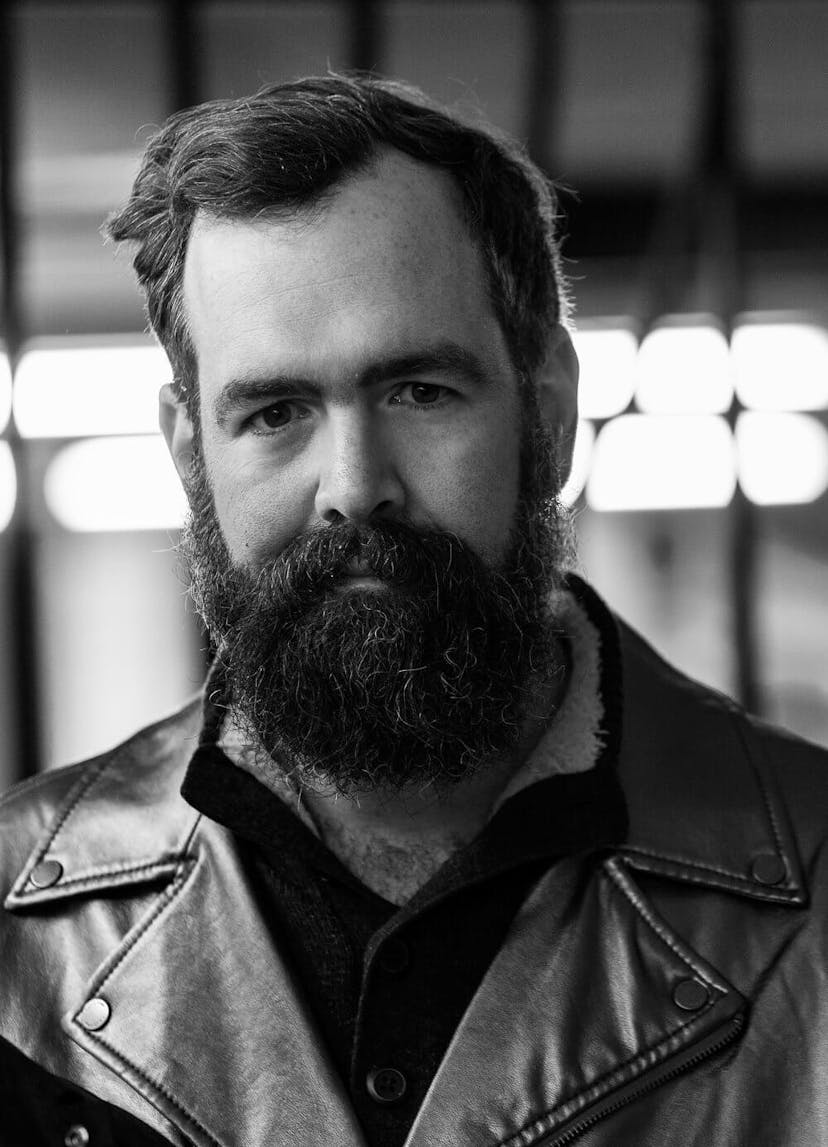In the early 1950s, Dr. Jonas Salk developed the first effective vaccine against poliomyelitis, the life-threatening disease more commonly known as polio. At the time the disease was rampant: More than 56,000 people in the US—mostly children—were diagnosed in 1952 alone, and three thousand died from polio that year. That same summer, Salk began testing his new vaccine on children who had already recovered from the virus, hoping that their immune systems would develop additional antibodies to work against infection. The plan worked, and in the following years millions of people around the world would receive vaccines—first Salk’s shot, and Dr. Alfred Sabin’s orally administered vaccine, which was cheaper to produce and dispensed en masse via sugar cubes laced with the live attenuated virus.
Larry Silver’s black-and-white photograph Polio Camp, Upstate New York was also taken in the deadly summer of 1952, when the Bronx-raised photographer was still a teenager. In it, two boys with crutches fixate on something unseen while a third child walks away from the camera. Camps like this one were created specifically for children with nervous system disorders, allowing them to interact and play with kids who couldn’t attend more established summer camps. (In the Boston area, Camp Sea Haven on Ipswich’s Plum Island opened in 1947 and served children with polio and cerebral palsy for decades.) Though the crutches are central to Silver’s photograph, the boys in the image are presented as neither weak nor in need of sympathy. The upward camera angle and the boys’ overly large pants make them resemble old men glued to a baseball game.
Silver’s photograph is one of about forty pieces on view in the RISD Museum’s exhibition “Variance: Making, Unmaking, and Remaking Disability,” and the photograph stands out among a well-curated selection of pieces, nearly all works on paper drawn from the museum collection. One notable exception is the exhibit’s only 3-D piece, a plastic back brace produced by the industrial designers Lanzavecchia + Wai. (Curator Conor Moynihan has also included two curiosities from his own personal collection, a newspaper advertisement and a carte de visite promoting the circus performer Miss Lavinia Warren.)
The exhibition opened in February 2022, after five million people globally had died from COVID-19. Since then, the monkeypox virus has impacted queer communities in North America for the first time, while a single case of polio was discovered in New York’s Rockland County in July 2022. Suddenly outdated was the curatorial wall text that states that “since 1979, the United States has not had a single documented case of polio.” While that statement deserves a footnote or two, the World Health Organization declared polio fully eliminated from the Americas in 1994. Now, amid multiple other public health crises, it seems that the largely forgotten virus might be poised for a comeback.
“Variance” crucially does not prioritize or rank different types of disabilities—genetic or acquired, physical or intellectual, potentially fatal or otherwise. Works about HIV/AIDS and tuberculosis are placed near works about being D/deaf, colorblind, or of short stature. The exhibition also does not focus exclusively on artists who have disabilities or feel obligated to suggest that autobiographical works are inherently superior to views from outsiders. A number of circus-referencing works even play with the question of whether it’s advantageous to perform one’s disability for profit, as Lavinia Warren did when P.T. Barnum promoted her as “The Smallest Woman Alive.”
In many cases the wall text is lengthy but useful, describing as it does the lives of the artists and their relationship to disability, which often can not be gleaned from the work itself. Much of the work is personal and was created in a moment of crisis: Avram Finkelstein and Vincent Gagliostro’s culture-jamming broadside “Enjoy AZT (ACT UP),” for instance, was created in response to a controversial HIV drug that, according to the sign, “makes half the people who try it sick and for the other half it stops working after a year.”
Other works in the exhibit are by artists who were close with people with disabilities, such as Edvard Munch, who drew a portrait of his late sister twenty years after her death from tuberculosis, or Henri de Toulouse-Lautrec, whose precise attention to facial detail might stem from his studying under the deaf artist René Princeteau. A more recent example is a photograph from RISD graduate Forest Kelley’s series Michael, a fictional biography of a gay uncle who fell to his death, presumably by suicide, in rural New England during the early years of the AIDS epidemic.
Other works are removed from the artists themselves, and these range from Paul Strand’s morally ambiguous street photography to a stunning Goya etching of, as the curator describes, “a stately little person.” The exhibit’s oldest piece, from 1735, is William Hogarth’s didactic depiction of London’s Bethlehem Hospital, the institution from which the word bedlam derives. Photographer Salvatore Mancini is represented by two photographs from the Ladd School in Exeter, Rhode Island, a state-run institution where patients suffered decades of abuse and neglect before the hospital finally closed in 1994. In one photograph a pensive-looking child stares gloomily out a window that has been violently broken, the spidering glass fragmenting the girl’s despondent face. Michael Mazur’s adjacent lithographs terrifyingly render conditions at a Cranston, Rhode Island facility originally called the State Asylum for the Insane and Poor. Mental disabilities are one reason people ended up in these cruel state-run institutions; others included poverty, debt, a lack of familiarity with English, homelessness, or even pregnancy out of wedlock. Nearly anyone, in other words, could be affected.
One might argue that broadening the scope of disability waters down its utility as a term, particularly for those seeking help. If anyone might consider themselves disabled at any time, how can resources be allocated to those who need them most? A more compelling, more optimistic framing of “Variance” demands that, since anyone can become disabled at any time, non-disabled viewers do our best to consider the lives—physical, emotional, and material—of the people around us, including those we may not see on a daily basis. While many people have stopped wearing masks in public—to use one timely example—it is also worth remembering the number of immunocompromised people who have been forced out of indoor public spaces altogether. People don’t stop existing when others can’t see them.
The universal impacts and threats of disability are reflected in the exhibition’s newest piece, Phoebe Boswell’s 2021 self-portrait “Zoom [But, Mars],” a graphite and watercolor representation of the artist on a video conferencing screen, an interplanetary background glitching like all Zoom backgrounds did in the early days of the pandemic. The piece is a bit silly in the same way that a lot of work-from-home technology felt a bit silly at the beginning. COVID-19 has impacted nearly everyone in the world, whether they themselves have had the virus, lost friends or relatives to it, or had their lives upended by restrictions. The question, for those of us living through it, is what we can do to make life easier for people during the next crisis.
Variance: Making, Unmaking, and Remaking Disability is on view at RISD Museum through October 9, 2022.
A version of this review will be available in Issue 09: Burnout. Subscribe today to reserve your copy.




